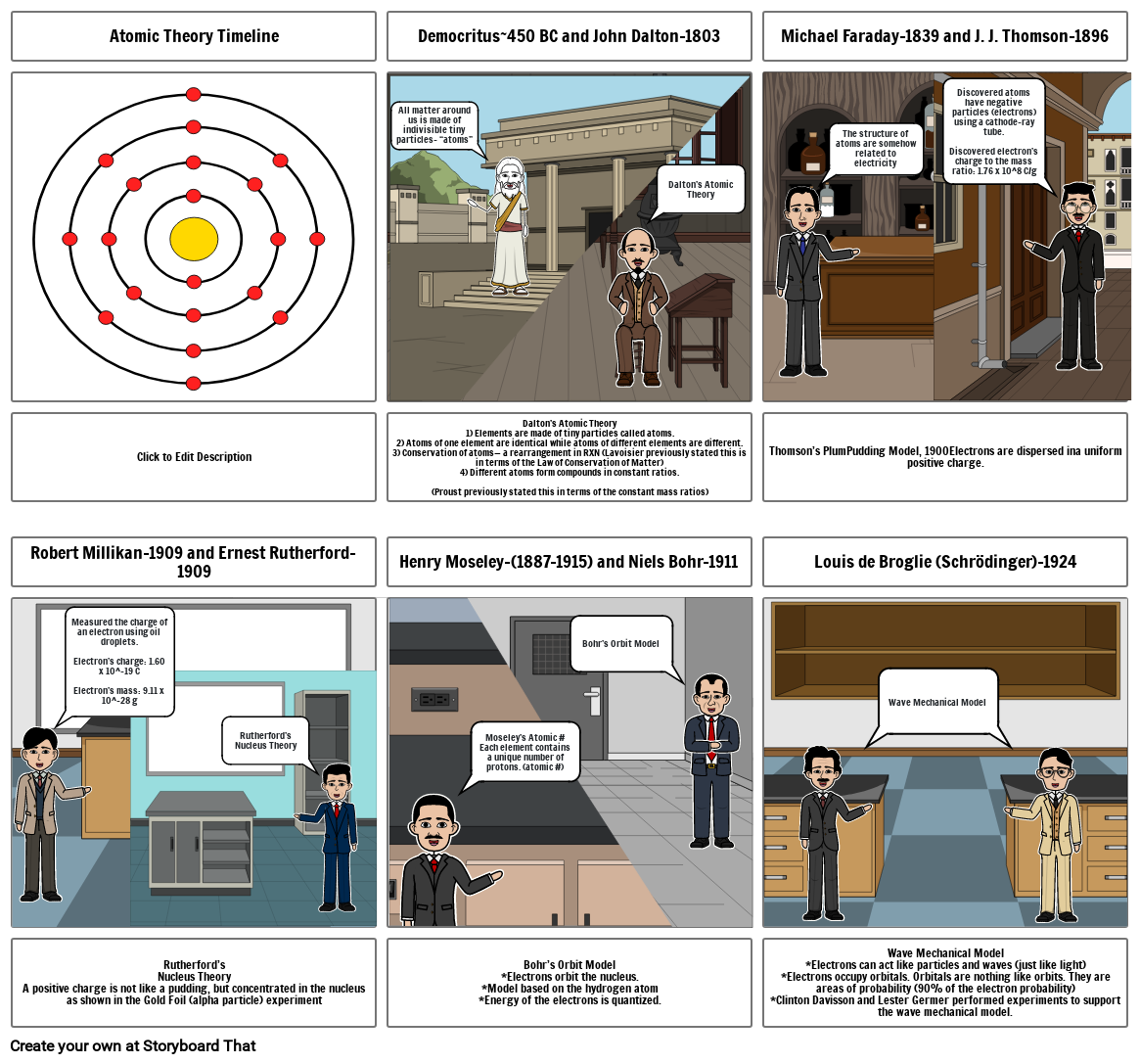Atomic Theory Timeline

Storyboard Text
- Atomic Theory Timeline
- Democritus~450 BC and John Dalton-1803
- All matter around us is made of indivisible tiny particles- “atoms”
- Dalton’s Atomic Theory
- Michael Faraday-1839 and J. J. Thomson-1896
- The structure of atoms are somehow related to electricity
- Discovered atoms have negative particles (electrons) using a cathode-ray tube.Discovered electron’s charge to the mass ratio: 1.76 x 10^8 C/g
- Click to Edit Description
- Robert Millikan-1909 and Ernest Rutherford-1909
- Measured the charge of an electron using oil droplets.Electron’s charge: 1.60 x 10^-19 CElectron’s mass: 9.11 x 10^-28 g
- Dalton’s Atomic Theory1) Elements are made of tiny particles called atoms.2) Atoms of one element are identical while atoms of different elements are different.3) Conservation of atoms— a rearrangement in RXN (Lavoisier previously stated this is in terms of the Law of Conservation of Matter)4) Different atoms form compounds in constant ratios.(Proust previously stated this in terms of the constant mass ratios)
- Henry Moseley-(1887-1915) and Niels Bohr-1911
- Bohr’s Orbit Model
- Thomson’s PlumPudding Model, 1900Electrons are dispersed ina uniform positive charge.
- Louis de Broglie (Schrödinger)-1924
- Wave Mechanical Model
- Rutherford’sNucleus TheoryA positive charge is not like a pudding, but concentrated in the nucleus as shown in the Gold Foil (alpha particle) experiment
- Rutherford’sNucleus Theory
- Bohr’s Orbit Model*Electrons orbit the nucleus.*Model based on the hydrogen atom*Energy of the electrons is quantized.
- Moseley’s Atomic #Each element contains a unique number of protons. (atomic #)
- Wave Mechanical Model*Electrons can act like particles and waves (just like light)*Electrons occupy orbitals. Orbitals are nothing like orbits. They are areas of probability (90% of the electron probability)*Clinton Davisson and Lester Germer performed experiments to support the wave mechanical model.
Over 30 Million Storyboards Created
No Downloads, No Credit Card, and No Login Needed to Try!
